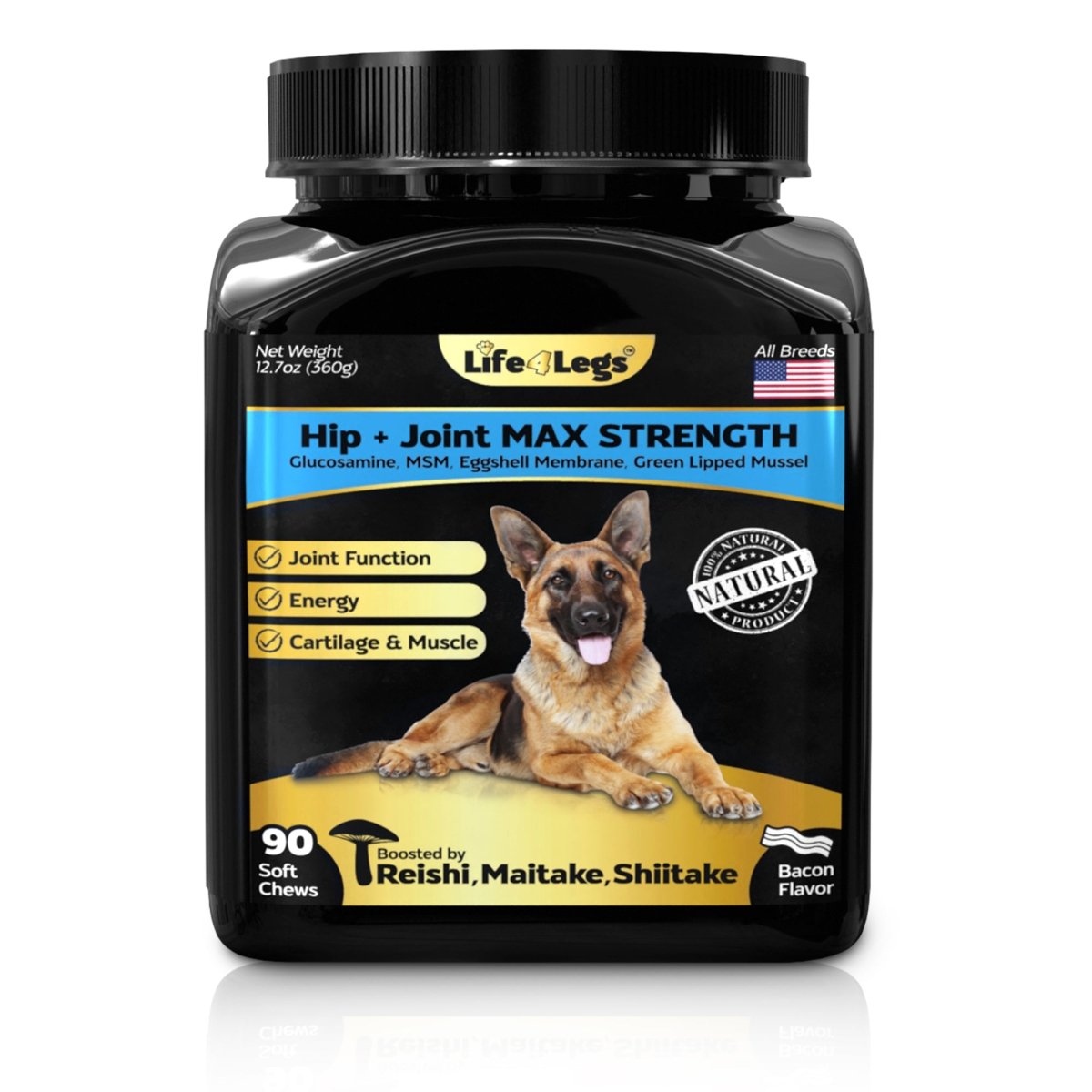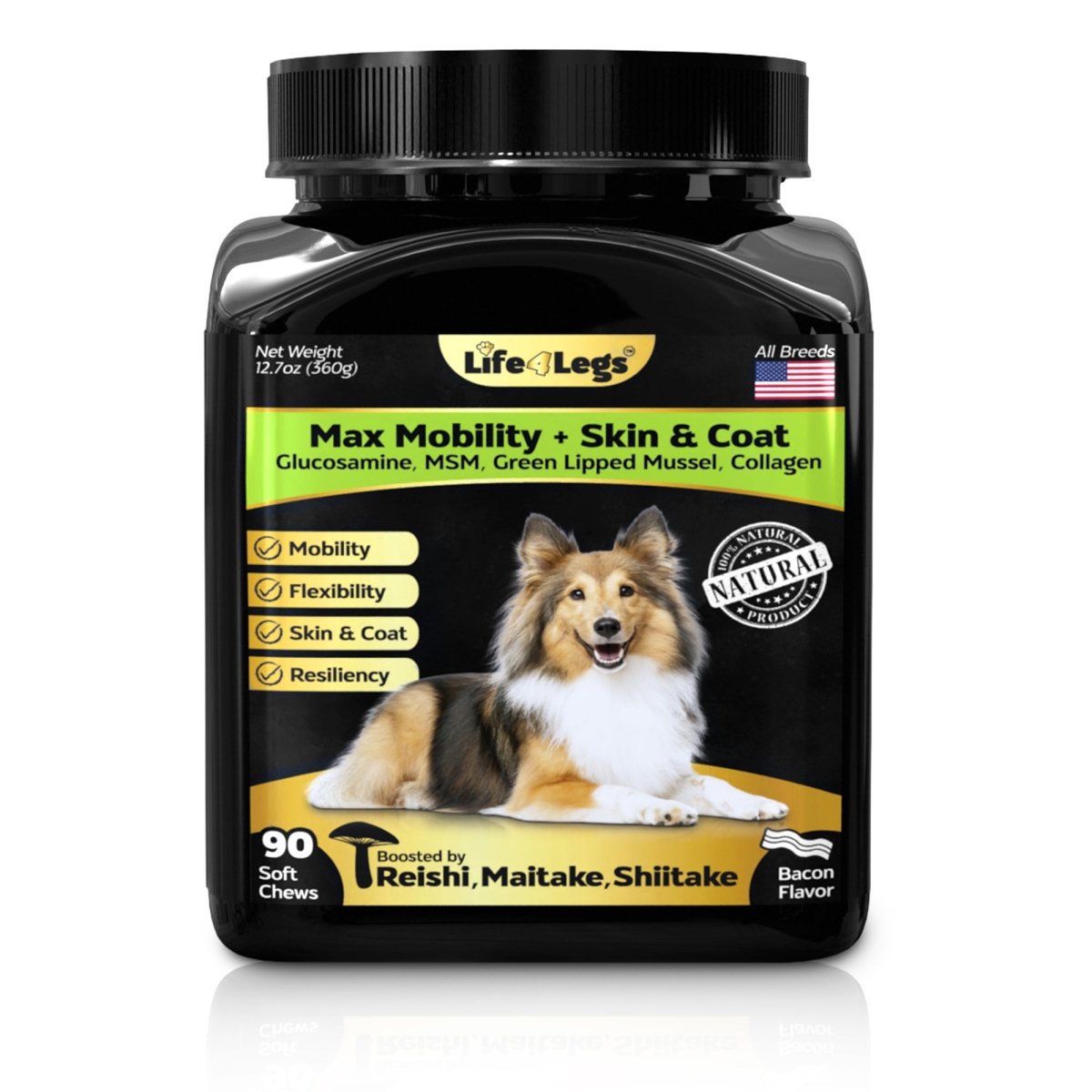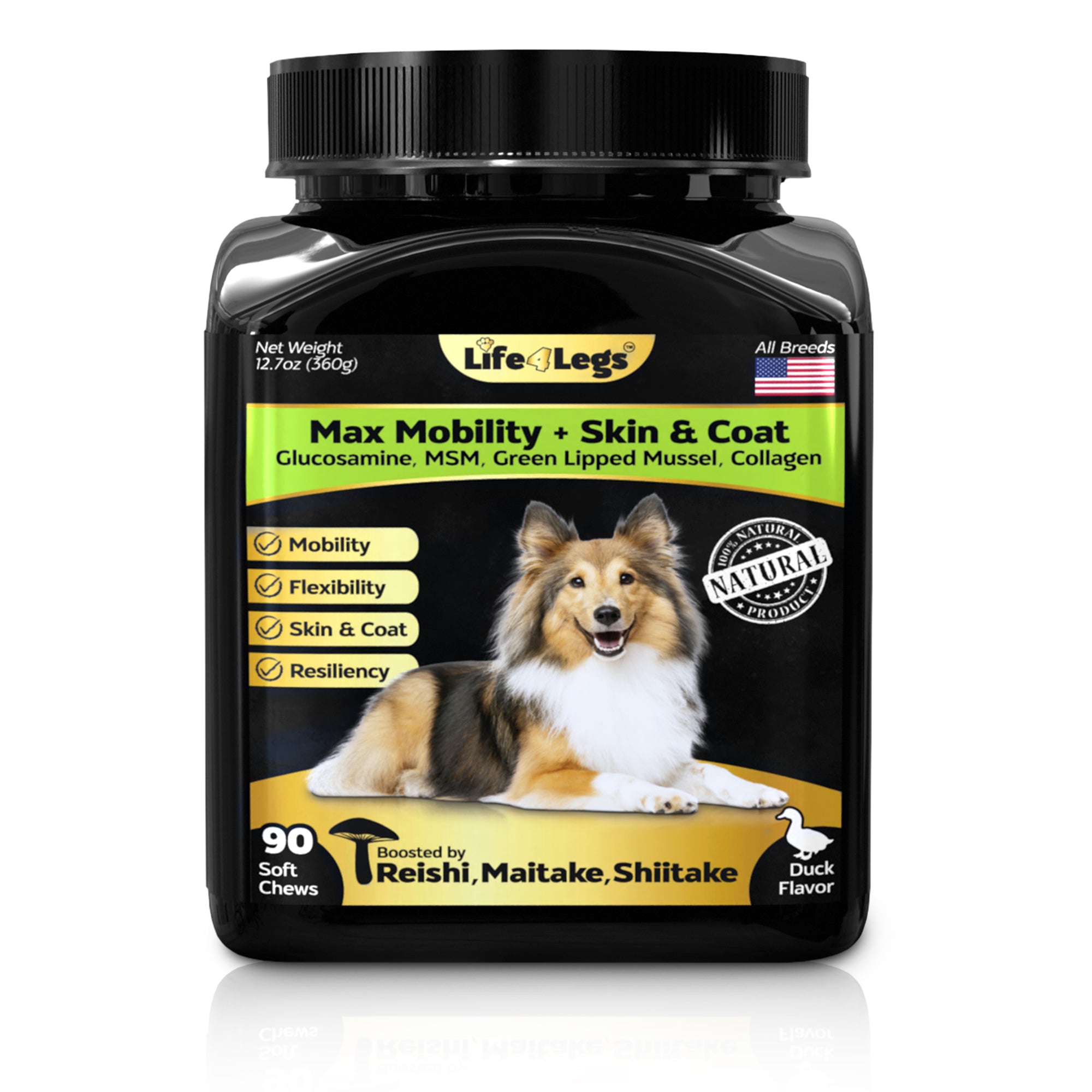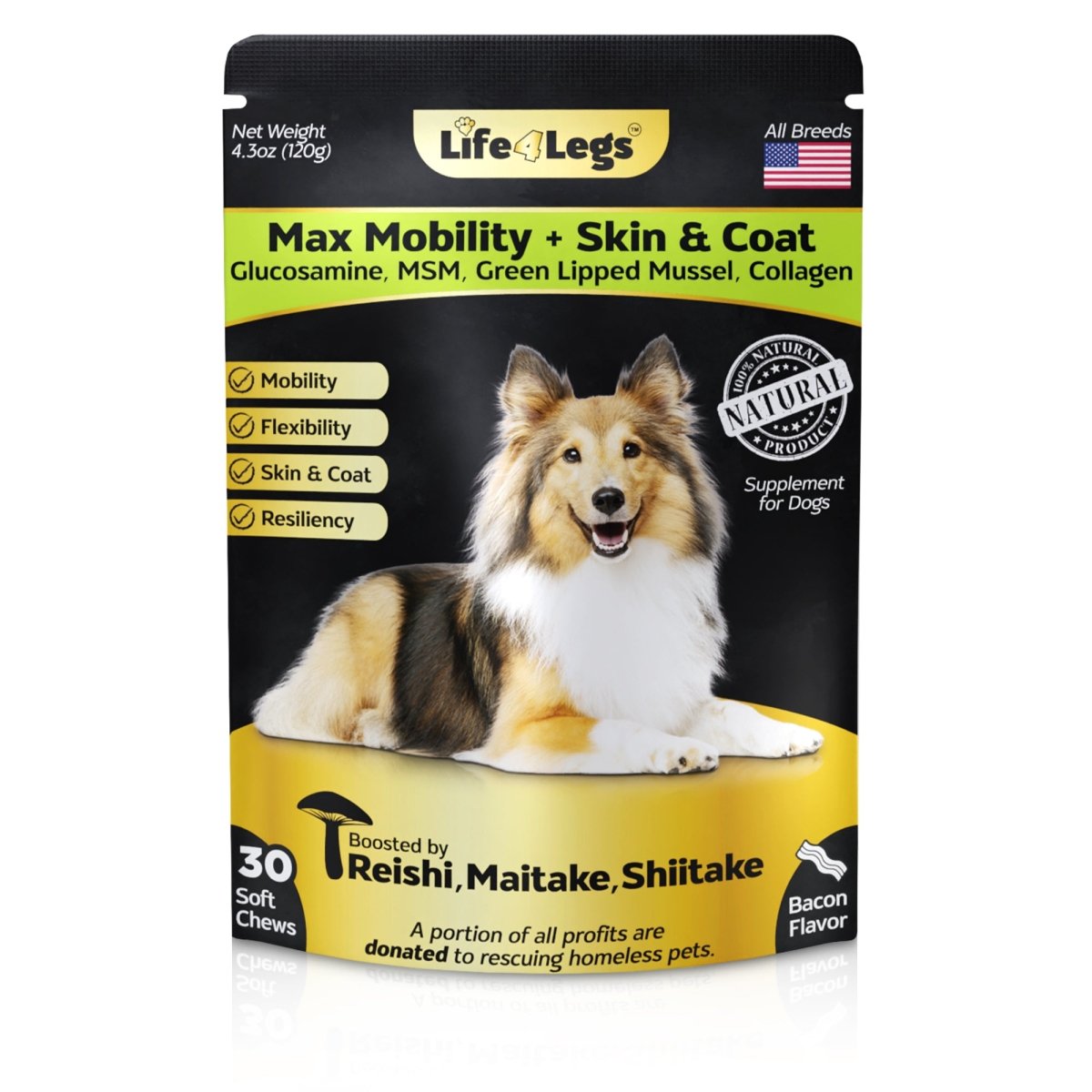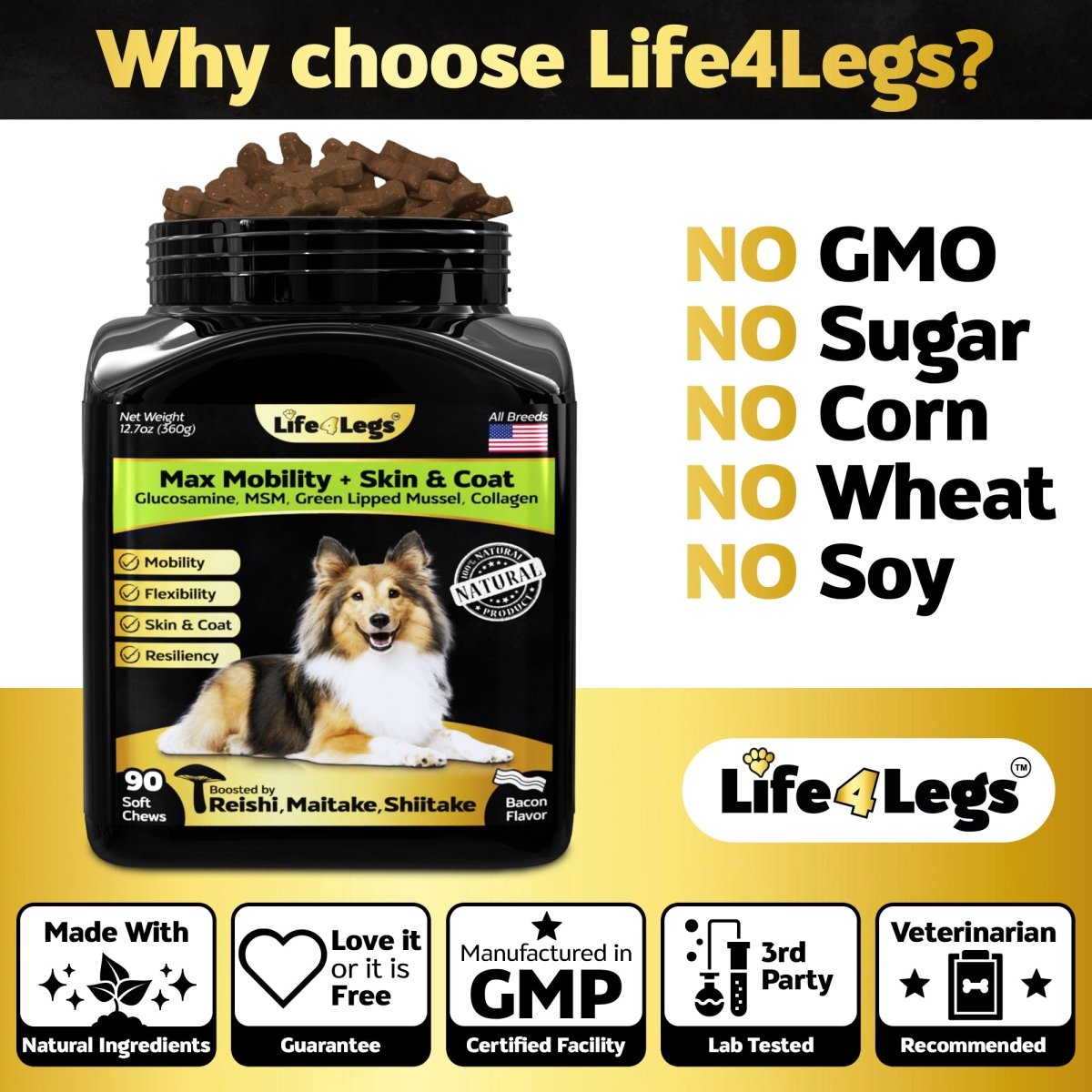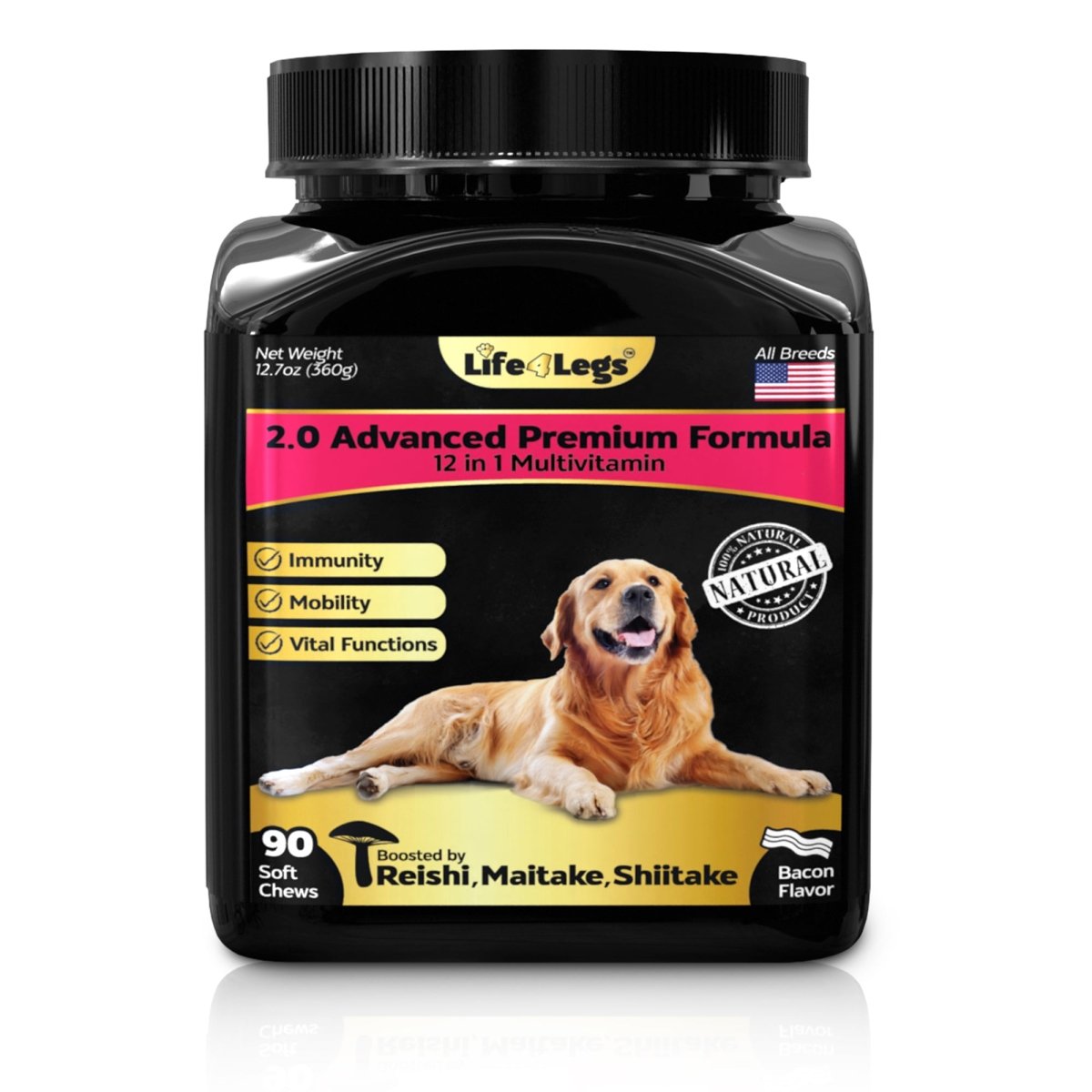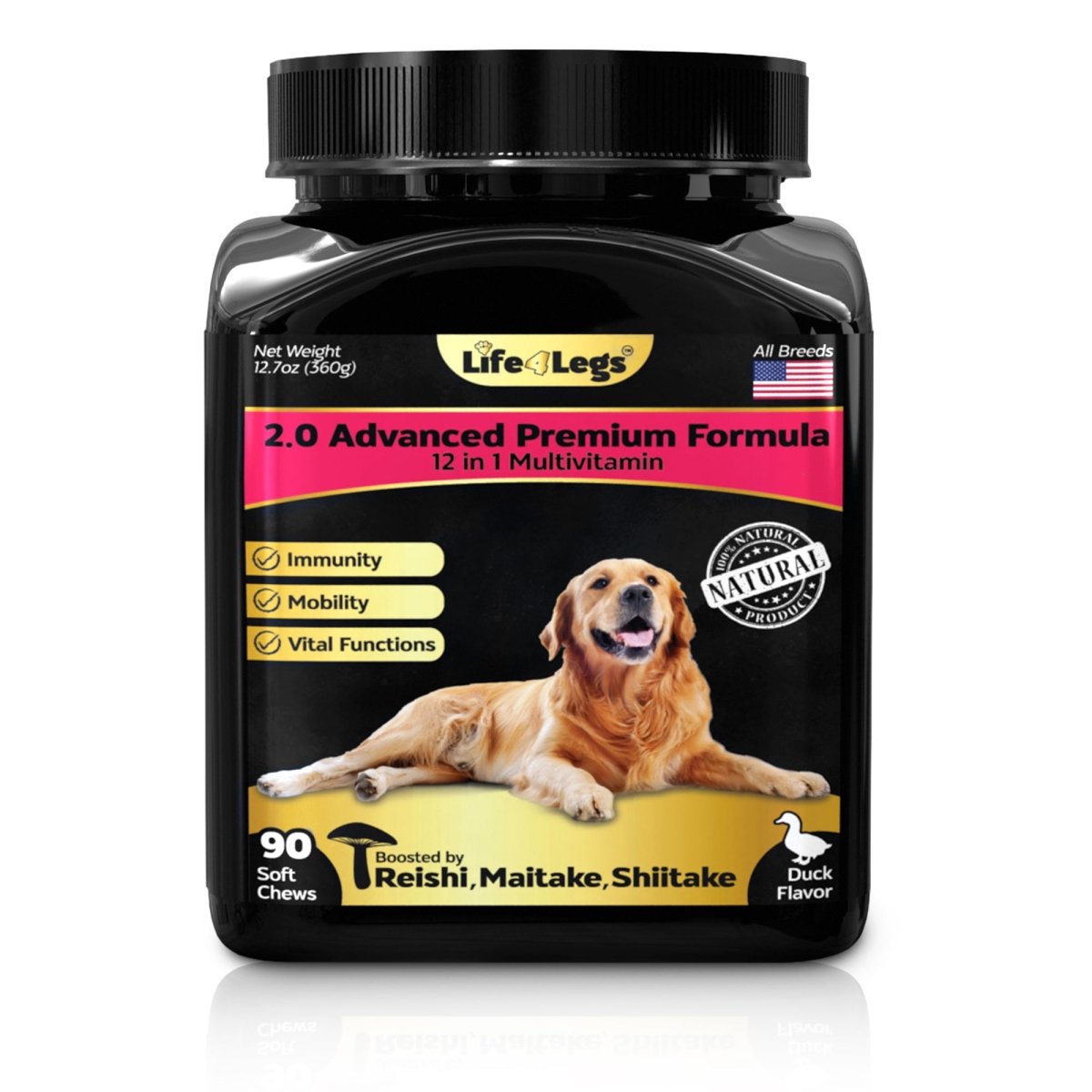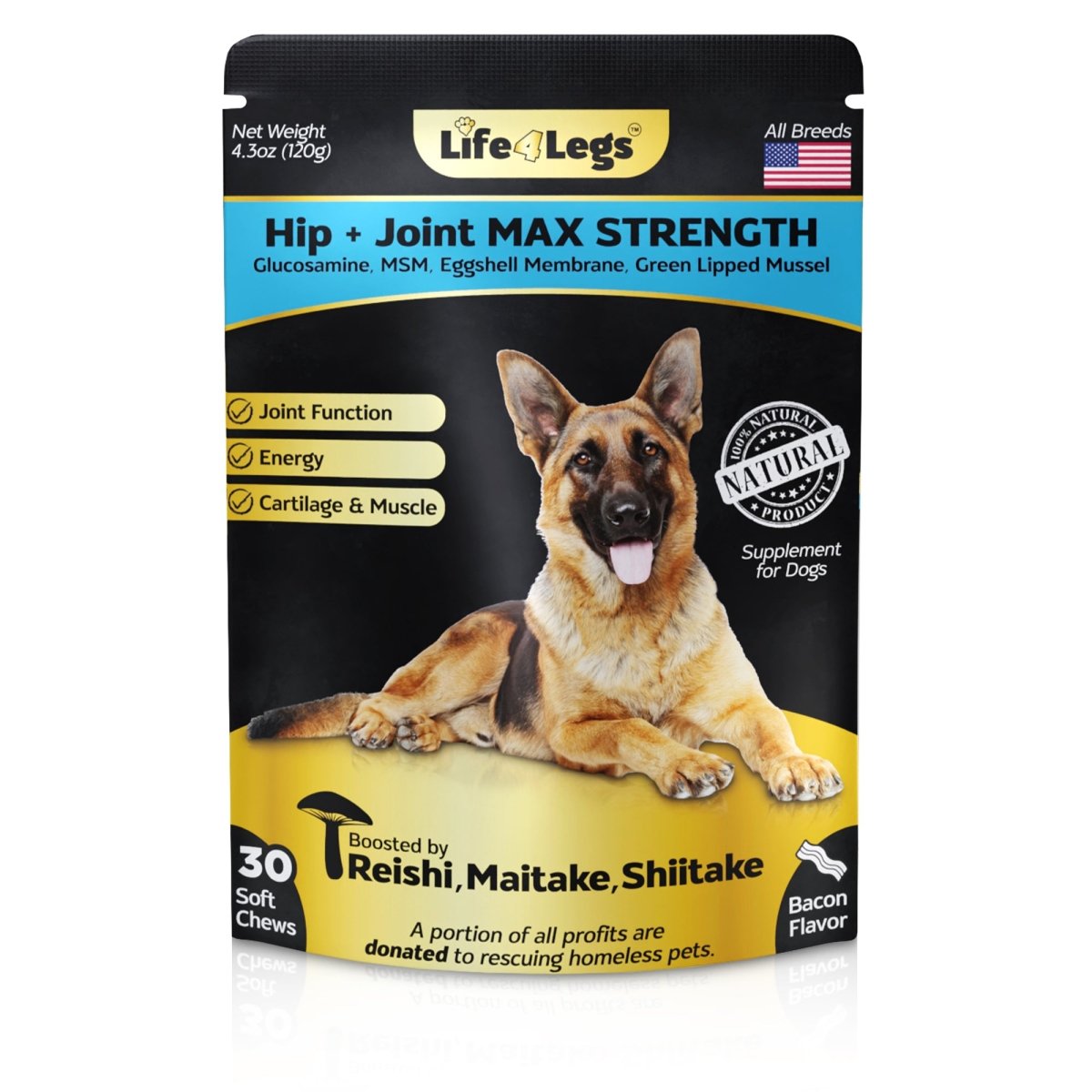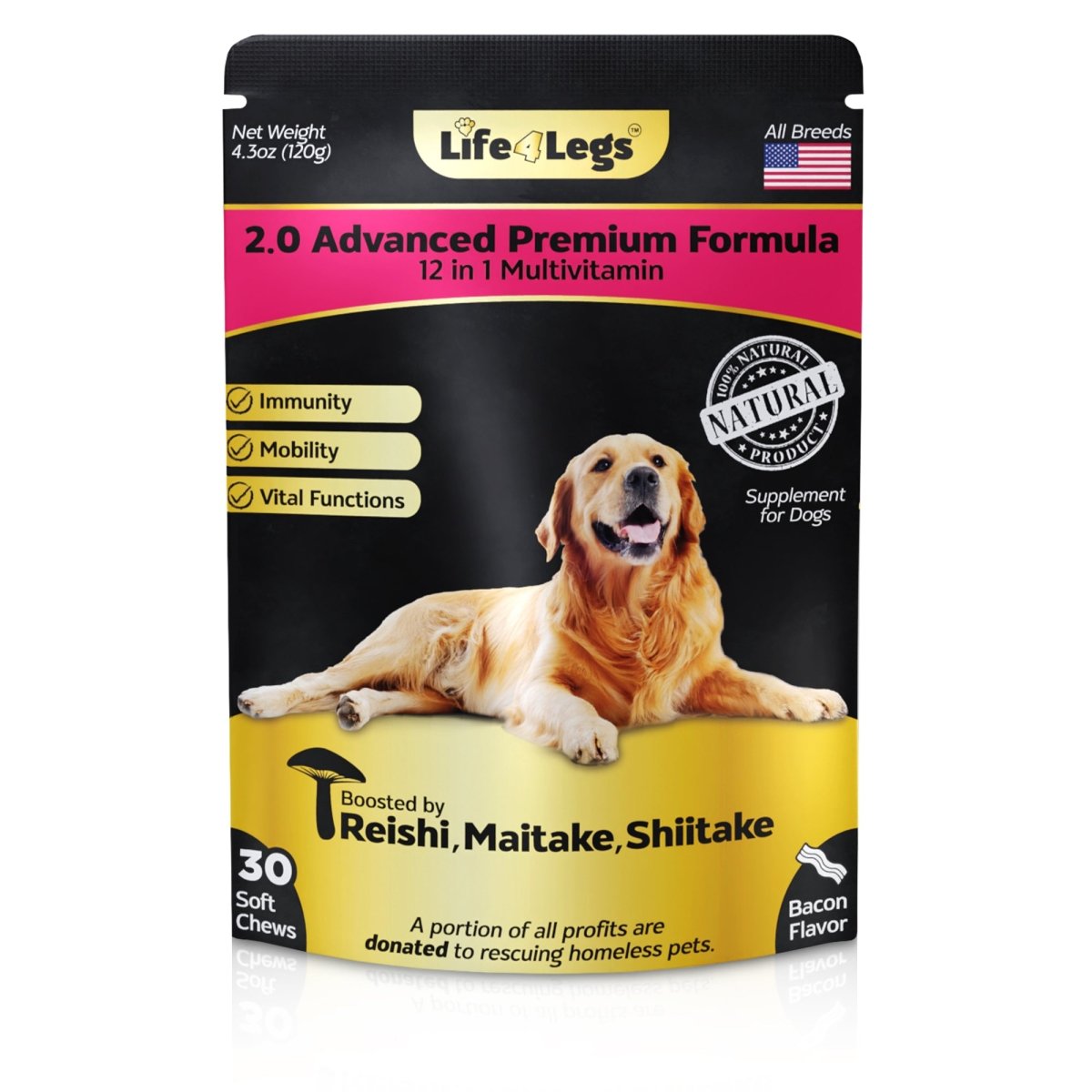
Spotting Trouble: Signs of Hip Problems in Dogs and How to Relieve Their Pain

Have you noticed that your dog has recently lost enthusiasm for bounding up stairs, especially if they're getting on in years? Spotting hip issues in older dogs can be a bit more challenging due to their natural energy conservation.
Hip problems often result from injuries like hip dislocations, the aging process, or can manifest in the dog's daily activities. Other contributing factors may include a diet lacking essential nutrients, systemic inflammation, weight gain, or allergies triggering autoimmune disorders. While a healthy diet and joint supplements are the go-to solutions, surgery could become a consideration in certain situations.
To ensure your dog's hip pain is properly addressed, the journey begins with a comprehensive diagnosis by a primary care veterinarian. In this guide, we'll explore the common signs to watch for as a responsible dog owner and delve into strategies to fortify your dog's joints. Let's dive into our insights on managing hip problems and the necessary treatments to restore your furry friend to good health.
Identifying the Culprit: Hip Problems or Hip Dysplasia: whether it's an injury or hip dysplasia, these conditions can drain your dog's energy, particularly as they age. Both are manageable with the right medical interventions, but distinguishing between the two is crucial.
Canine hip dysplasia develops as dogs grow, leading to hip joint laxity, resulting in limping and hip pain. While it's more prevalent in larger breeds, it can affect dogs of all sizes. If left untreated, hip dysplasia can lead to muscle atrophy, arthritis, and limited mobility, potentially necessitating total hip replacement. Therefore, prioritizing your dog's health is paramount.
 Consulting the Veterinarian diagnosing hip dysplasia requires professional medical confirmation, so dog owners should promptly consult a veterinarian when their pets display clinical signs of the condition, as mentioned above.
Consulting the Veterinarian diagnosing hip dysplasia requires professional medical confirmation, so dog owners should promptly consult a veterinarian when their pets display clinical signs of the condition, as mentioned above.
These diagnostic steps are crucial in identifying the underlying causes and determining the appropriate course of action for treating hip dysplasia.
Treatment for hip dysplasia may range from total hip replacement to surgical interventions for severe injuries with similar symptoms. It's advisable to seek professional medical guidance rather than attempting self-diagnosis.

In Conclusion, hip discomfort in dogs can stem from injuries and with proper treatment or adequate rest, your dog should recover swiftly.
On the contrary, hip dysplasia represents a developmental issue involving the femur bone and the hip socket, which tends to become more pronounced as dogs mature. If left unmanaged, it can lead to lameness.
Non-surgical approaches like lifestyle adjustments and physical therapy offer effective solutions for addressing hip discomfort. However, in severe cases, surgical intervention may be necessary to prevent long-term lameness. This underscores the importance of promptly seeking veterinary care if your dog displays signs of hip dysplasia.
Hip problems often result from injuries like hip dislocations, the aging process, or can manifest in the dog's daily activities. Other contributing factors may include a diet lacking essential nutrients, systemic inflammation, weight gain, or allergies triggering autoimmune disorders. While a healthy diet and joint supplements are the go-to solutions, surgery could become a consideration in certain situations.

To ensure your dog's hip pain is properly addressed, the journey begins with a comprehensive diagnosis by a primary care veterinarian. In this guide, we'll explore the common signs to watch for as a responsible dog owner and delve into strategies to fortify your dog's joints. Let's dive into our insights on managing hip problems and the necessary treatments to restore your furry friend to good health.
Identifying the Culprit: Hip Problems or Hip Dysplasia: whether it's an injury or hip dysplasia, these conditions can drain your dog's energy, particularly as they age. Both are manageable with the right medical interventions, but distinguishing between the two is crucial.
Canine hip dysplasia develops as dogs grow, leading to hip joint laxity, resulting in limping and hip pain. While it's more prevalent in larger breeds, it can affect dogs of all sizes. If left untreated, hip dysplasia can lead to muscle atrophy, arthritis, and limited mobility, potentially necessitating total hip replacement. Therefore, prioritizing your dog's health is paramount.

Recognizing Signs of Hip Dysplasia and Related Challenges: here are some typical indicators of hip dysplasia and related issues in dogs:
- Limping: Dogs with hip dysplasia often exhibit a limp as hip joint laxity progresses, making it one of the most recognizable signs of hip problems. However, an injured paw could also cause limping.
- Bunny Hopping: Instead of running normally, dogs with hip issues may resort to bunny hopping, lifting both hind legs simultaneously to redistribute weight.
- Struggling to Stand Up After Lying Down: If your once-energetic dog has difficulty rising, it's time to consult your vet. While some mobility changes are natural with age, persistent signs of pain should be addressed.
- Reluctance to Exercise: Dogs with hip dysplasia tend to shy away from physical activity, even avoiding their beloved morning walks in favor of rest.
- Swollen Joints: Hip dysplasia can lead to swollen joints, and dogs may react sensitively when touched in these areas. If this condition persists, a vet visit is necessary.
- Pops or Cracks During Movement: While joint popping or cracking isn't necessarily painful, it can be a significant symptom of hip dysplasia. Watch for signs of discomfort in your dog when this occurs.
- Loss of Muscle Mass: Dogs with hip dysplasia often experience muscle loss in their hind legs. Close observation can help detect this, but it should be corroborated with other symptoms to confirm hip dysplasia.
 Consulting the Veterinarian diagnosing hip dysplasia requires professional medical confirmation, so dog owners should promptly consult a veterinarian when their pets display clinical signs of the condition, as mentioned above.
Consulting the Veterinarian diagnosing hip dysplasia requires professional medical confirmation, so dog owners should promptly consult a veterinarian when their pets display clinical signs of the condition, as mentioned above.
The veterinary examination may involve the following:
- X-ray of the dog's hips
- Evaluation of hip joint laxity
- Blood chemical profile analysis
Treatment for hip dysplasia may range from total hip replacement to surgical interventions for severe injuries with similar symptoms. It's advisable to seek professional medical guidance rather than attempting self-diagnosis.
How to Address Hip Issues in Your Canine Companion
Your veterinarian will prescribe medications to mitigate joint pain or slow the progression of hip dysplasia. However, you can adopt certain practices and integrate specific elements into your dog's routine to alleviate joint discomfort and enhance overall joint health.
Here are proactive measures to fortify your dog's hip and joint health:
- Physical Therapy: Engaging in gentle stretches and targeted movements can be beneficial for your dog's hip joints, enhancing mobility. Activities such as underwater treadmills and hydrotherapy can be especially helpful. Nonetheless, it's crucial to consult your veterinarian before implementing any physical therapy regimen, especially if your dog experiences chronic hip pain.
- Nutrient-Rich Diet: The well-being of hip joints, ligaments, and bones relies on a supply of essential vitamins, healthy fats, and minerals. Insufficient nutrition can leave your dog feeling weak and exacerbate joint problems. Incorporating whole meats into your dog's diet is crucial, as they serve as rich sources of vitamins, healthy fats, amino acids, and minerals.
-
Dietary Supplements: Many pet owners recognize the significance of dietary supplements in maintaining their dog's joint health and development. While a balanced diet is essential, supplementing it with high-quality products can significantly enhance your dog's quality of life. Consider adding the following popular supplements to your dog's regimen:
- Glucosamine for dogs
- MSM
- Turmeric
- Omega 3

At Life4legs, we are dedicated to optimizing the use of supplements to promote holistic well-being in dogs, including benefits for their brain function, bones, joints, immune system, and coat health.
- Facilitating Indoor Mobility: Creating a comfortable indoor environment that eases your dog's movement can help manage joint discomfort. Installing ramps can assist them in accessing elevated areas like couches, beds, or vehicles with minimal strain. Additionally, maintaining a warm indoor temperature is essential, as cold weather can lead to joint stiffness and hip pain. Seek guidance from your veterinarian for specific adjustments you can make to your home to accommodate your dog's needs.
- Weight Management: Effective weight control is crucial for your dog's overall well-being, even before the onset of hip pain or discomfort. Maintaining a healthy weight ensures that your dog remains energetic and capable of navigating stairs and other daily activities without issue, unless there's an underlying health concern. Ensure your dog maintains an appropriate weight, neither overweight nor excessively lean, by adhering to a balanced feeding schedule and providing meals rich in essential nutrients. As discussed earlier, supplements can complement your dog's dietary needs.
In Conclusion, hip discomfort in dogs can stem from injuries and with proper treatment or adequate rest, your dog should recover swiftly.
On the contrary, hip dysplasia represents a developmental issue involving the femur bone and the hip socket, which tends to become more pronounced as dogs mature. If left unmanaged, it can lead to lameness.
Non-surgical approaches like lifestyle adjustments and physical therapy offer effective solutions for addressing hip discomfort. However, in severe cases, surgical intervention may be necessary to prevent long-term lameness. This underscores the importance of promptly seeking veterinary care if your dog displays signs of hip dysplasia.







